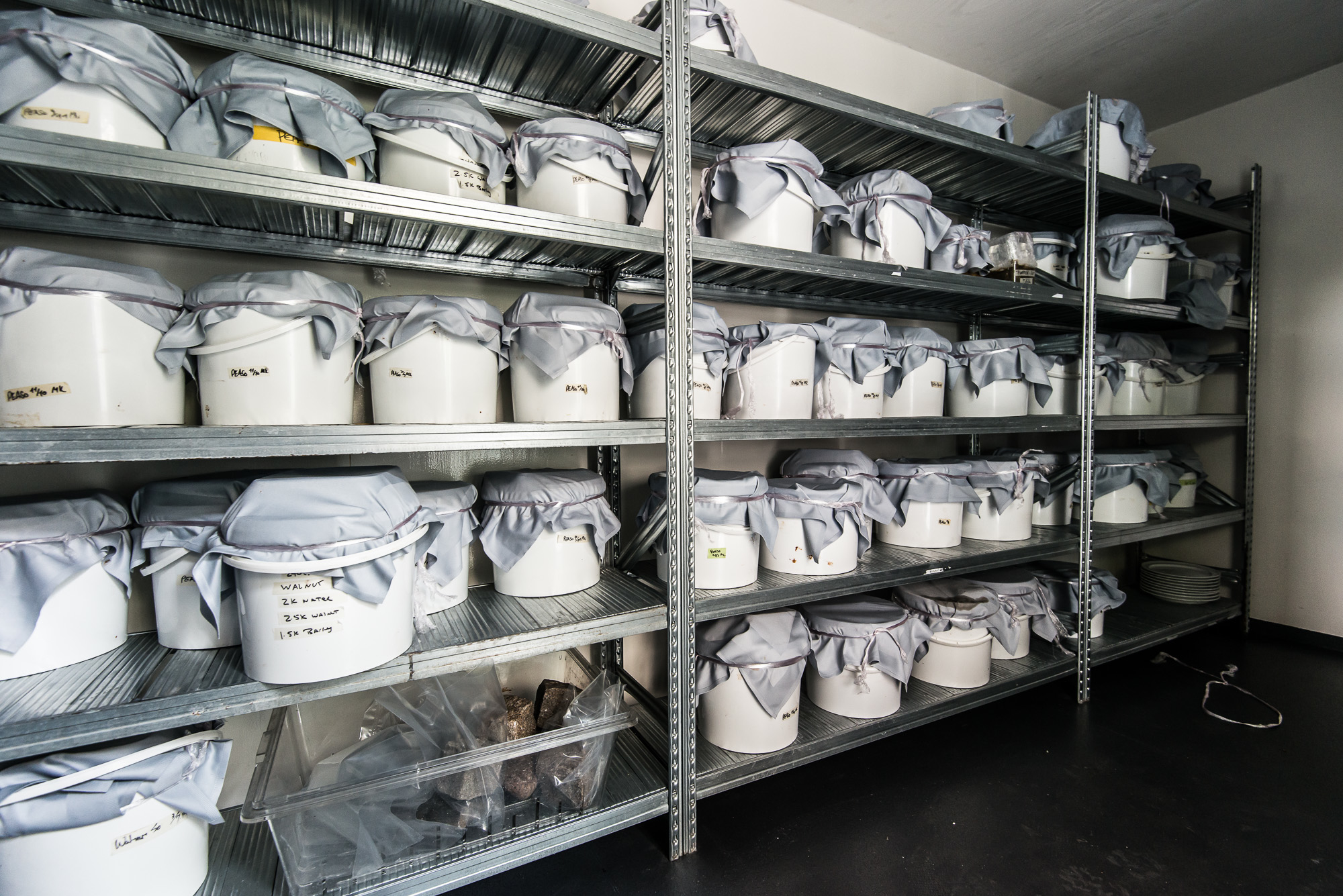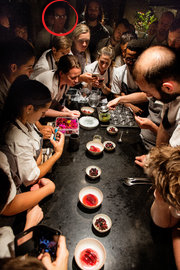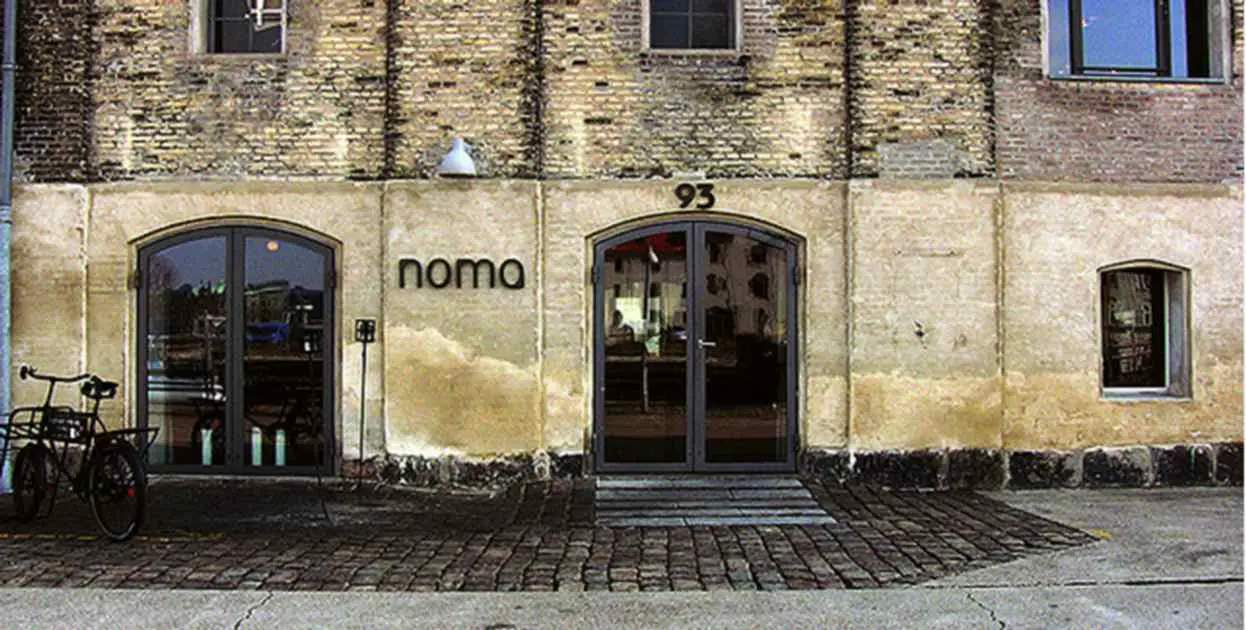Noma is the best restaurant in the world, and its chef René Redzepi is considered one of the greatest culinary minds of his generation
But just last week, Mr. Redzepi made international news by announcing that he was shutting down Noma at the end of December 2016.
He’s decided to move the restaurant to what the New York Times described as “an auditorium-size crack den.” Mr. Redzepi wants to change the area, a patch of land just outside the anarchist neighborhood of Christiana, into an urban farm. In 2017, Noma will be reborn with a new mission and menu.
Brandon was working at Noma when they released the news, and is now one of the last groups of stagiers who can say they worked at the original Noma.
I spoke to him on Monday over the phone.
So how did the opportunity to stage at Noma come about?
Well, Paul came into qui one afternoon after he’d just left an event promoting the Mentor BKB Foundation, a foundation that’s sole purpose is to inspire culinary excellence. He was saying they have a lot money to give away but not enough applicants, so he encouraged everyone to go home and apply for the [internships] so we could get paid to stage anywhere we want.
So I applied, listed Noma as my top restaurant, and then I got a call from a lady telling me my grant was approved. I had asked to go for a year, but when they talked to Noma, they said they could only set up an internship for 3 months. So, I flew over in June and was there for June, July and August.
What was your first day like?
I showed up at 7am—everyday you get there at 7:00. They have a lot of interns, so they have a huge workforce: 50 or 60 people, probably half of which are unpaid interns. I went to the production kitchen first, where there are probably fourteen interns, six hired staff and two sous chefs.
This kitchen is just for service, so we’re doing mass projects, picking herbs—two Lexan’s of parsley—and all the prep work. Everything’s broken into four sections, and they’re all in charge of certain things: there’s a chef de partie of each section and then a couple sous chefs downstairs and upstairs.
Since a lot of the dishes are just mise en place—there’s no cooking as we know it—there’s a lot of work that goes into the food, but it’s done all over the restaurant. It’s not like you cook a scallop and put it on a puree, there’s nothing like that. And since you’re making 85 or 90 plates of the same dish [during service], people are doing mise en place all day. Because of this, all the pick-up times are a minute, everything’s just one minute.
What’s the daily schedule look like?
You eat two meals a day, one from 11:00-11:15 (which most people skip), and then we have dinner at 5:00-5:45. Lunch service stars at noon, so you eat lunch and go downstairs for the meeting, where the whole staff gathers and we go over reservations, cover counts, dietary restrictions, who has what table, and if Rene’s there he’ll add some stuff. Then you go back to your respective part of Noma, cause there’s a few different areas you can work. Then service starts and there’s no fucking around. You’ve got like twenty people [in the service kitchen], and they’re all in different corners picking up dishes.
If you’re not there 150 percent then you get run out. It’s super, super intense. I saw a few people get asked to leave cause they weren’t performing, so it’s very serious, but it’s very fun at the same time because of the adrenaline rush. It’s like the Super Bowl; you show up to the Super Bowl twice a day.
What’s staff meal like?
Well, my first week was in production, but then me and this other guy volunteered to do staff meal the next week, and we did really well. I did fried chicken and biscuits, and chicken and sausage gumbo, and they tripped out. I feel like I earned a lot of respect from the staff, and even Rene said thanks and how much he appreciated it.
What sections did you get to work?
So I was taking out the trash on the last day of staff-meal week, and the chef de cuisine Daniel [Giusti] came out and asked where I wanted to work next week. I said the fermentation lab, and so I was there for the next six weeks after that. After that, I went into the test kitchen, which is the R&D side of Noma, and I was there for four weeks.
Then, in my final week I had to go back to fermentation because the sous chef there had to go to Zimbabwe to do research, so they needed someone to run it. They asked me to do it, but at that point the only thing I still hadn’t done was the service kitchen. So in my last week I approached Daniel and said I’d really like to be in service kitchen, so we worked it out to where I was in the fermentation lab until service started, and then I just came in and worked the line. So those are the four areas: production kitchen, service kitchen, fermentation lab and test kitchen.
What was the fermentation lab like?
The head of it is a guy named Lars Williams, and there’s flavor chemist named Ariel Johnson, and they built the whole thing with by hand. It’s four shipping containers right outside Noma that they renovated and insulated to where they can control five different rooms.
 There’s a lacto-fermentation room, a vinegar room, a walk-in, a miso room, a koji room and a garum room, and they’re all a bit different in temperature and humidity to promote optimum growth.
There’s a lacto-fermentation room, a vinegar room, a walk-in, a miso room, a koji room and a garum room, and they’re all a bit different in temperature and humidity to promote optimum growth.
Do any of the projects that you saw stick out in your memory?
Everything was crazy, but the koji was super sick. Everything starts out of koji, if you don’t have koji then none of the other fermentations—besides the vinegar and lacto-fermentations—would work, because you need koji to make the garums and the misos.
To make koji you take a starch—the Japanese use rice, but Noma wanted to emphasize their terroir, so they used unpearled barley—you cook it, inoculate it with Aspergillus oryzae, then put it through a process of cooling, inoculating and fluffing, and put it in a certain room with a certain temperature and certain humidity and you let it ferment for 36 hours.
Then, you take that koji and add it to other things, in certain ratious with certain percentages of water and salt (for the most part) and you just let it sit for 2-3 months, a year, sometimes more.
Noma is famous for foraging—did you get to do any?
Yeah they’re huge on it there because it really shows where you are in the world. It limits you because you can only use things that grow around you, but at the same time it opens your eyes to the potential of your surroundings: a root, a branch, a berry, a flower—anything—even grass and dirt.
We foraged for some things like herbs every day, but we also did a lot of wood sorrel, stinging nettles and wild roses. The roses were fantastic: One day we collected like 6 or 7 large black trash bags full of rose petals. Also, the mulberries, I’ve never had a mulberry as good as I had as when I was there—it was the most delicious berry I’ve ever eaten.
They were so good that Rene took the lobster tail off the menu and replaced it with a bowl of mulberries. He thought it was more decadent.
What was Rene like?
Oh man, he was captivating, inspirational. He’s one of those select people that have a next-level kind of quality. It’s like watching Picasso paint, honestly. He’s changed the world; in his professional field, he’s absolutely changed the world.
First off, he works hard, so fucking hard. I’ve never worked as hard when I was there, and second, he’s a creative genius. He’s very serious when it comes to the food.
There’s a lot of international chefs there—did you learn any tips or techniques that you want to bring back to qui?
My favorite thing was when they’re putting things together, fermenting things, foraging things, making vinegars and oils and drying things, they describe it as adding letters to their alphabet.
https://instagram.com/p/7DburROTlg/?taken-by=quiaustin
When they combine certain things, those letters turn into words, dishes, which then turn into menus that eventually become stories. I love where that idea has taken them and their food: it’s not just fermenting, or drying, or teamwork, or foraging, or weather—it’s all those things, and when it comes together on a plate it’s so, so good.
But, man, I can’t stress this enough—it’s so much work, so much work. 50 people, 80-90 hours a week, no exaggeration. But here’s the thing: everyone’s so goddamn passionate about it that they don’t want to do anything else.
Chefs at Noma are given the opportunity to create a dish and present it to Rene and the rest of the staff on Saturday nights—did you ever do a Saturday night project?
Yeah, so you remember those mulberries I mentioned? I took them and muddled them with rose miso, fresh rose petals and dryad’s saddle garum. Then strained that, and put the juice at the bottom of a bowl.
Then I took a lobster tail and rolled it in rose petals. I took two plastic container lids, put parchment down, brushed it with rose oil, laid out rose petals on it, put parchment over it, then capped it with the other lid. Then I Cryovacked it, sealed it, pressurized it three times, blanched it for 30 seconds, cooled it and took it out, and that was the rose paper I rolled the lobster tail in.
I seasoned the tail with rose miso and just a bit of salt, and then we slow roasted it, crisped it up on charcoal, sliced it and served it in the muddled broth with oxalis.
But you initially had apprehensions about doing a project, right? What changed your mind?
Yeah, I didn’t know why people did them, and I didn’t want to do it for the wrong reason. My entire career—I’ve never wanted to do anything for the wrong reason. So I talked to a lot of the guys who did projects, asking why they did them. Is it for the menu, or is it just [to show off]? You know? I could do something I know [the chefs] would think is cool, but I wouldn’t be excited about it, and then that’s not the point.

But they all told me that the goal of projects is to get you to think about food: to develop your style, to find the reason behind everything you do, see what you like. Essentially they’re supposed to make me question what do I—Brandon—like to eat, think is good.
And you ended up doing your Saturday night project when the New York Times food reporter was there.
Yeah, earlier that week Rene had said, ‘Alright, guys, the New York Times guy is coming this week to write about the big news. He’s going to be here for Saturday night projects, so who’s doing projects?’
And I fucking raised my motherfucking hand.
It was just me and three other people, and he looked at us, and without saying a word, his eyes said, ‘You better not fuck this up.’
But when Rene tasted my dish he called it a masterpiece—that was the word he used—a masterpiece.
And then that was my last day—my last night there, the end of my three months—culminated in this night of me working the fermentation lab, then service, then doing a Saturday night project with the New York Times food writer standing there taking pictures, along with thirty other employees from Noma watching, and all these other people who are just there. All while Rene’s podcasting it from his phone to the world. It was nuts. But that’s why you’re there man, because this is the show.








